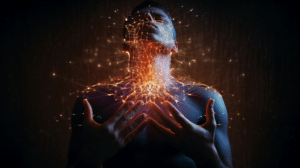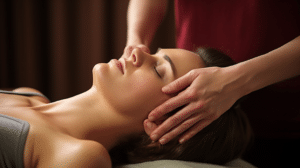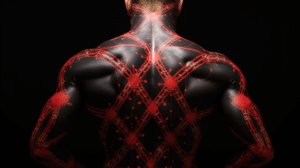Massage has become a popular form of relaxation, but the differences between traditional and neuromuscular massage can take time to decipher. With its promise of treating chronic pain and muscle tension, neuromuscular massage seems attractive. However, many people need to know what this type of massage entails and who it best suits. This article will explore the key differences between neuromuscular and traditional massages, including their advantages and disadvantages.
We’ll also discuss what to expect during a neuromuscular session and joint conditions that can be treated with such techniques. By the end of this article, you should be able to understand which style is most suitable for your needs.
Key Takeaways
- Both neuromuscular massage and traditional massage reduce muscle tension and improve circulation.
- Both types of massage help individuals feel emotionally and mentally relaxed and can reduce stress levels.
- Neuromuscular massage targets specific areas in the muscles that cause spasms or tension, while traditional massage involves manipulating soft tissues of the body with pressure techniques and stretching movements.
- Neuromuscular massage uses trigger point therapy, myofascial release, cross-fiber friction, active stretching, and deep tissue work.
Benefits of Neuromuscular Massage
 Neuromuscular massage offers several potential benefits to those who receive it. It can help reduce muscle tension and associated pain, promote healing from injury or illness, improve physical performance, and enhance body alignment. A neuromuscular massage is a form of soft tissue therapy that applies pressure to specific points on the body to balance the muscular system.
Neuromuscular massage offers several potential benefits to those who receive it. It can help reduce muscle tension and associated pain, promote healing from injury or illness, improve physical performance, and enhance body alignment. A neuromuscular massage is a form of soft tissue therapy that applies pressure to specific points on the body to balance the muscular system.
This type of massage typically uses slower strokes with more force than traditional massage techniques, stretches, and other active movements to treat underlying causes of pain rather than simply providing temporary relief.
The primary goal of neuromuscular massage is to reduce muscle tension by targeting hypertonic muscles — that is, muscles that are too tight or have become “locked” due to prolonged periods of contraction. By relieving this tension, neuromuscular massage can restore balance in the body and increase the range of motion in joints affected by muscle tightness.
In addition, neuromuscular massage can help realign misaligned bones caused by poor posture or prolonged sitting in one position for an extended period.
When performed correctly, neuromuscular massage can significantly relieve chronic pain and tension while promoting improved physical performance due to increased mobility and flexibility. Additionally, because it focuses on releasing underlying causes instead of just treating symptoms, neuromuscular massage is an effective treatment for musculoskeletal conditions such as sciatica and lower back pain. Overall, this therapeutic massage helps people achieve greater well-being by addressing the root cause rather than the symptoms alone.
Benefits of Traditional Massage
Traditional massage is a manual therapy used for centuries for many different purposes. It provides many holistic health benefits, such as relaxation and stress reduction. Relaxation benefits are achieved through massage techniques such as Swedish Massage, which utilizes long strokes to reduce muscle tension and improve circulation. Stress reduction is attained through deep-tissue techniques like trigger point therapy, which targets specific pressure areas to release endorphins and increase blood flow.
Relaxation Benefits
The relaxation benefits of both neuromuscular massage and traditional massage are well-documented. Traditional massage reduces muscle tension and posture correction, allowing the body to relax deeply. Neuromuscular massage also has calming effects on the body by targeting specific areas of tension and releasing them. It balances the nervous and muscular systems, improving circulation throughout the body. As a result, many people feel emotionally and mentally relaxed after receiving either type of massage. Additionally, both modalities can help reduce stress levels in individuals of all age groups.
Stress Reduction
Both neuromuscular massage and traditional massage are effective in reducing stress levels. Both forms of massage can help to create a sense of relaxation that can lower cortisol levels through deep breathing techniques by addressing trigger points and reducing feelings of tension and anxiety by releasing endorphins by focusing on pressure points throughout the body. When used together, combining these two techniques is even more effective in reducing stress than either alone.
By offering an environment where clients feel safe and accepted, neuromuscular and traditional massages can provide long-lasting relief from underlying stressors.
Critical Differences Between Neuromuscular Massage and Traditional Massage
Neuromuscular and traditional massage differ in their approach to restoring balance and alleviating pain. Neuromuscular Massage, or Trigger Point Therapy, is a specialized form of bodywork that targets specific muscle areas that can cause spasms or tension. This type of massage is designed to help improve posture, reduce pain caused by muscle spasms, and restore proper range of motion.
improve posture, reduce pain caused by muscle spasms, and restore proper range of motion.
Traditional massage involves manipulating the body’s soft tissues with pressure techniques and stretching movements. It focuses on reducing stress and increasing relaxation while relieving aches and pains.
The critical difference between neuromuscular and traditional massage is the technique used for each modality. Neuromuscular massage uses direct pressure on specific trigger points throughout the body, which helps relax tense muscles, release tightness, reduce inflammation, improve circulation, eliminate toxins, and promote overall healing within the entire system. Traditional massage utilizes various strokes such as effleurage (light stroking), petrissage (kneading), or tapotement (percussion).
These strokes are applied using varying degrees of pressure depending upon what needs to be addressed at any given time during treatment.
Another important distinction between these two types of therapy is that neuromuscular therapy tends to be more targeted than traditional massages when addressing chronic pain issues or injuries due to its focus on specific problem areas rather than general relaxation techniques used in conventional treatments. Additionally, neuromuscular therapists often use additional tools such as heat packs or ice cubes to facilitate healing further or relieve painful conditions like headaches or fibromyalgia symptoms. In contrast, traditional massages do not typically incorporate this equipment into their practice.
Overall, both neuromuscular massage and traditional massage provide beneficial effects for people looking for relief from discomfort associated with injury or chronic pain issues; however, it’s essential to understand the differences between them so you can make an informed decision about which one may best suit your individual needs for a successful outcome in restoring balance and alleviating pain associated with physical ailments.
Understanding the Neuromuscular Massage Process
Neuromuscular massage therapy focuses on the muscles to relieve tension, improve circulation, and reduce pain. This type of massage utilizes specific techniques such as trigger point therapy, deep tissue work, stretching, and pressure points to help promote healing within the body. The benefits of neuromuscular massage include improved flexibility and range of motion, reduced pain levels, improved circulation, decreased stress, and increased relaxation.
Benefits?
The benefits of neuromuscular massage versus traditional massages are subject to individual preferences. Neuromuscular massage is a type of bodywork that uses specific techniques for manipulating and releasing areas of muscle tension, helping to reduce joint pain and other musculoskeletal issues. Unlike a regular massage, it targets specific muscles to relieve chronic pain or injury.
It can help increase the range of motion by breaking up adhesions in the fascia, which are the connective tissues between joints and muscles. Additionally, neuromuscular massage helps improve circulation in the affected area by promoting blood flow to tense muscles. This increased circulation helps reduce inflammation and improves overall wellness. Ultimately, this type of treatment provides an effective way for individuals dealing with chronic pain or limited mobility to find relief without relying on medication or surgery.
Techniques?
Techniques employed in neuromuscular massage include trigger point therapy, myofascial release, and cross-fiber friction. Trigger point therapy helps to reduce muscle tension by targeting knots or trigger points within the muscles. Myofascial release stretches connective tissue surrounding the muscles for improved flexibility. Cross-fiber friction is a technique used to break up scar tissue that may be causing pain.
Active stretching is another form of treatment often used in neuromuscular massage, which can relieve chronic musculoskeletal conditions and help improve range of motion. Traditional massages focus on relaxation and circulation while aiming to reduce stress levels, often using long, gentle strokes with light pressure and kneading techniques.
What to Expect During a Neuromuscular Massage
 During a neuromuscular massage, one can expect to experience muscle manipulation and soft tissue work. The massage targets chronic pain or tension due to injury or overuse. A therapist will use their hands, knuckles, elbows, or feet to pressure specific trigger points, causing muscle tension. This type of massage is meant to be more intense than traditional massages; it is not uncommon for clients to feel some soreness following the session.
During a neuromuscular massage, one can expect to experience muscle manipulation and soft tissue work. The massage targets chronic pain or tension due to injury or overuse. A therapist will use their hands, knuckles, elbows, or feet to pressure specific trigger points, causing muscle tension. This type of massage is meant to be more intense than traditional massages; it is not uncommon for clients to feel some soreness following the session.
The therapist will assess your body for any knots in the muscles and then apply pressure on those areas with their fingers, palms, forearms, elbows, or feet. Depending on your needs, they may utilize long strokes, short strokes, circular movements, and stretching techniques. As they do this, they may ask you about what feels good and what doesn’t so they can adjust accordingly.
Neuromuscular Massage Therapy (NMT) releases muscle tension by targeting specific “trigger points” in the body that cause pain when pressed upon or compressed by an outside force such as a hand or elbow. By pushing these spots with other techniques, such as Swedish massage therapy, which involves long, smooth strokes to relax tight muscles, NMT helps reduce pain levels deep within the tissues while promoting relaxation and improved posture, too!
This type of massage is beneficial in relieving stress-related symptoms, including headaches, neck/shoulder aches, and backaches, while also helping reduce inflammation caused by arthritis or other joint issues. While no medical studies prove its effectiveness, it has been found anecdotally that many people find relief through neuromuscular massages when nothing else seems to work!
Common Conditions Treated With Neuromuscular Massage
Neuromuscular massage is a specialized massage therapy that focuses on the muscles and nerves, unlike traditional massages. It has effectively treated various neuromuscular conditions, such as muscle spasms and chronic pain. Using specific techniques to target the nerve pathways from the spine to the treated area, neuromuscular massage helps restore balance in the musculoskeletal system. This type of massage can benefit anyone dealing with muscle spasms or looking for relief from chronic pain due to injury or illness.
Common conditions treated with neuromuscularMassagee include back pain, sciatica, neck stiffness and headaches, myofascial pain syndrome, tendonitis, fibromyalgia, plantar fasciitis, carpal tunnel syndrome, and temporomandibular joint (TMJ) disorders.
In addition to providing immediate relief from physical discomfort associated with these conditions, neuromuscular massage can also help reduce stress levels by releasing tension in the body’s muscles and improving circulation throughout all body areas. Neuromuscular massages also improve flexibility and range of motion in affected areas while increasing overall energy levels. Ultimately, this type of massage therapy can provide long-term relief when managing chronic pain and muscle spasms while promoting relaxation and providing general well-being benefits that are much needed in today’s stressful world.
Disadvantages of Neuromuscular Massage
While neuromuscular massage can be beneficial for many conditions, it is essential to note that there are also some potential disadvantages associated with this type of therapy. Specifically, the deep tissue and trigger point work can cause soreness and discomfort for some people. This may limit the number of sessions they can have in a week or month due to pain or fatigue.
number of sessions they can have in a week or month due to pain or fatigue.
Additionally, neuromuscular massage requires more time and effort than traditional massages because each session must be tailored to the patient’s needs. Lastly, people often need multiple visits before noticing any significant treatment benefit.
Thus, while neuromuscularMassagee can provide relief from some muscular issues, such as chronic pain or tension headaches, patients must understand the potential drawbacks before committing to regular sessions:
- Soreness and discomfort during treatment * Require more time per session compared with traditional massages
- Need multiple visits for best results
Disadvantages of Traditional Massage
Although traditional massage is a popular form of physical therapy, it has some potential drawbacks. One such drawback is that it may be less effective in treating deeper issues within the muscle tissue. Unlike neuromuscular massage, which can target specific areas and trigger points to relieve pain and tension, traditional massage techniques are generally more broad-based.
This means they do not reach deep enough into the muscles to treat chronic pain or spasms.
Another disadvantage of traditional massage is that it can make people with susceptible skin uncomfortable. Deep pressure often associated with this type of massage can cause irritation and discomfort for those more vulnerable to touch than others. This could lead to an unpleasant experience and possibly even a delay in recovery due to the body’s reaction.
Who Should Consider Neuromuscular Massage?
Traditional massage is a popular type of bodywork that offers many benefits for people seeking relief from muscle tension, pain, and stress. However, there may be better options than traditional massage for everyone. Neuromuscular massage is an alternative type of bodywork that can provide relief to those who experience chronic pain and musculoskeletal dysfunction.
Neuromuscular Massage (NMM) focuses on specific areas in the body by targeting trigger points with direct pressure or stretching techniques. This massage helps relax muscles, reduce inflammation, and improve circulation. It can also help restore balance to the central nervous system, leading to improved posture and increased range of motion.
Who Should Consider Neuromuscular Massage? People who suffer from:
- Chronic Pain:
- Fibromyalgia
- Sciatica
- Headaches/Migraines
- Musculoskeletal Dysfunction:
- Neck & Back Pain
- Rotator Cuff Injuries
- Knee & Ankle Sprains & Strains
Neuromuscular Massage benefits include reduced stress levels, improved range of motion, decreased muscle tension and spasms, and improved posture. Those seeking Trigger Point Therapy or physical therapy may also find neuromuscular massage beneficial in relieving chronic pain associated with these conditions. However, consulting a qualified healthcare provider before any treatment is essential.
Frequently Asked Questions
How Long Does a Neuromuscular Massage Session Typically Last?
A neuromuscular massage session typically lasts between 30-90 minutes, and the length of the session will depend on the client’s individual needs. During a session, therapists focus on releasing trigger points and muscle knots to reduce pain and promote healing. This type of massage is often prescribed for those with chronic muscular pain due to tension or overuse, as it can be used as a preventative measure against further injury. Neuromuscular massage requires more specific techniques than traditional massages to achieve desired results, so longer sessions are typically needed to address issues adequately.
Are There Any Potential Side Effects of a Neuromuscular Massage?
Irony can be found in the potential side effects of a neuromuscular massage. Despite being an alternative manual therapy, it can still leave the recipient feeling tender, sore, or uncomfortable after treatment. x, in particular, can cause increased muscle tension and fatigue as they are released during the session.
Although temporary, these sensations are often unavoidable due to the nature of neuromuscular massage techniques. It is essential to rest afterward to ensure that no long-term damage occurs and that full recovery is achieved. Care must also be taken when selecting a qualified practitioner who understands this type of therapy and its associated risks so you feel secure and respected throughout your journey.
Is Neuromuscular Massage Safe for Pregnant Women?
Neuromuscular massage is generally considered safe for pregnant women, but they should consult a healthcare practitioner beforehand. For mothers, this massage can provide several benefits, including improved circulation and relaxation techniques to help reduce stress levels. Additionally, neuromuscular massage can help reduce muscle tension in the neck and shoulders caused by poor posture during pregnancy. It can also alleviate back pain by releasing trigger points of the glutes and lower back muscles. Lastly, neuromuscular massage may be beneficial for improving moods and promoting overall well-being among expectant mothers.
How Often Should One Receive a Neuromuscular Massage?
When considering a neuromuscular massage, it is essential to query the benefits and compare costs and effectiveness to determine how often one should receive such a massage. Generally speaking, these massages may be more expensive than traditional massages due to the specialized techniques used, but they can provide more significant relief from muscle tension and pain. Also, compared to conventional massages, neuromuscular massages may be more effective for those with chronic muscular issues.
Therefore, it is best to consult with an experienced massage therapist who can evaluate each individual’s needs and advise them on how often they should receive a neuromuscular massage.
Does Health Insurance cover Neuromuscular Massage?
Health insurance coverage is crucial when considering the cost of neuromuscular massage. While traditional massage may be more affordable, neuromuscular massage can offer excellent relief for those suffering from intense muscle strain. Comparatively speaking, the cost of neuromuscular massage may be higher, but it can provide far superior results when treating muscle-related maladies. For those seeking a more comprehensive solution to their muscular ailments, exploring whether their health insurance will cover all or part of the cost is wise.
Conclusion
Neuromuscular massage and traditional massage are two distinct techniques that provide different types of relief. Neuromuscular massage is tailored to specific areas to release tension, while traditional massage tends to be more general. Both have benefits and downsides, with neuromuscular massage being more effective for treating certain conditions. Ultimately, individuals must consider their needs before deciding which technique best suits them. Knowing the key differences can help narrow the decision-making process and ensure that one receives the most appropriate care suited to their needs.

